At the beginning of summer, you will be amazed by the variety of plants that bloom in June. The sun and warmth can already be seen in the vitality of the plants, for which the weather is very convenient. While the flowers change from spring to summer blooming, it is above all the flowering perennials that want to attract attention. Especially with these, there is an extensive wealth of shape and color, which especially knows how to unfold in near-natural gardens.
Good examples for the month of June are the clematis, daisies and, of course, iron hats, whose poisonous calyx flowers always inspire. Furthermore, many rhododendrons are either still in bloom or are only just beginning to bloom. Those who grow herbs should harvest some of them slowly to prevent buds from forming. This is particularly important with sage. Otherwise, you should look forward to perennials, as these provide bees, bumblebees, butterflies and other beneficial insects with sufficient food. An extensive list of all June flowering plants now follows.

Queen Anthurium, Anthurium warocqueanum: Care A-Z
The Queen Anthurium is a variety from the anthurium genus, which comprises over 1,000 species and is also known in this country as the flamingo flower. Due to its original home in the tropical rainforests of South and Central America, it is mainly cultivated here as a houseplant.

Heart leaf flower, Anthurium clarinervium: Care A-Z
With its heart-shaped, whitish-green veined leaves and slightly wavy at the edges, the heart leaf flower immediately catches the eye. They are the greatest ornament of this attractive ornamental foliage plant.

Calathea warscewiczii, Korbmarante: Care from A-Z
Calathea warscewiczii, a basket marante that originally comes from Costa Rica, is a houseplant in the local latitudes that is unfortunately not that easy to care for. However, with the care tips in this article, it will develop its decorative bloom.

Barberry hedge: planting and care from A-Z
Despite its thorns, the barberry is very suitable for a hedge due to its low demands on care and location. Because it grows very densely, the barberry hedge can withstand prying eyes from the outside.

Iron cross begonia, Begonia masoniana: care
Begonias are particularly popular and decorative indoor plants in the local latitudes. They have to be cultivated in the tub, as they need a lot of warmth due to their origin. A particularly beautiful variety is the iron cross begonia (Begonia masoniana), which originally comes from Vietnam.

Bearded Iris, Iris barbata: care from A-Z
There are high (Iris Barbata-Elatior) and low (Iris barbata-nana) varieties of the decorative beard iris (Iris barbata). However, the relatively simple maintenance looks similar for the different types of bearded iris. Instructions are given in the following article.
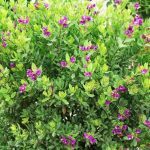
Finial, Polygala myrtifolia - care from A-Z + overwintering
The myrtle or myrtle-leaved finial, also known as finial for short, is a permanent bloomer from spring to autumn. It is considered to be easy to care for, but is extremely sensitive to too much moisture.

Dwarf palm, Chamaerops humilis: care from A-Z
Exotic palms are high on the popularity list. Often, dwarf palms of the Chamaerops humilis variety can be seen in gardens and on terraces. The attractive little palm tree requires little maintenance.

Cascade thyme, Thymus longicaulis: care from A-Z
Cascade thyme is one of the most beautiful types of thyme. It can grow crawling or hanging and impresses with pink flowers. The fragrant plant with the low growth is suitable for border borders, rock gardens and window boxes.

Trout begonia, Begonia maculata: care from A-Z
The trout begonia is a rare exotic beauty with striking foliage. The silvery-white dots on the green leaves also earned it the name Polka-Dot Begonia. Not to forget the extraordinary inflorescences.

Tuberous begonia, Begonia boliviensis: care instructions
Tuberous begonias are colorful, permanent bloomers that are preferred to be cultivated on balconies and patios. The eye-catching ornamental shrubs can also be planted outdoors. However, you have some requirements regarding care.

Indoor begonias, Begonia elatior hybrids: care
The indoor begonia can be a wonderful addition to the interior, but it also has some maintenance requirements. You can find out what to look out for here.

Coral begonia, Begonia corallina: care from A-Z
The coral begonia impresses with its large, striking leaves and intense coral-red flowers and rapid growth. We explain everything you need to know about caring for the popular Begonia corallina.

Blue bobblehead, Isotoma fluviatilis: care from A-Z
Blue bobble head is available in stores under many names. It is also known by many hobby gardeners as isotoma and false or carpet lobes. The blue bobblehead is originally native to Tasmania and the Australian southeast coast and prefers acidic and humid locations here. Due to the similar prevailing conditions in the local latitudes, the plant can also be cultivated in the garden. How the ideal care of the decorative ground cover should look like is explained in the further instructions.

Akeleiblättrige meadow rue, Thalictrum aquilegiifolium: care
The flowers of the columbine-leaved meadow rue appear light and almost graceful. Except for the similarity of the leaves, this plant has nothing in common with the Columbine. Also called Amstelraute, it is actually a perennial wild plant, which has now also made it into domestic gardens as an ornamental plant. There it is a popular perennial in the bed thanks to its delicate flowers, which are also suitable for less sunny areas and an important fodder plant for insects. It is easy to care for and once planted it will delight its owner for years with its delicate flowers. In addition, it is not only of great visual value, but is also an important fodder plant for insects such as the owl butterfly. The meadow rue, on the other hand, is becoming less and less common in nature. In some regions of the low mountain range, where its natural distribution areas are, it is already so rare that it is considered a plant in need of care.

Forest forget-me-not, Myosotis sylvatica: care from A-Z
The forest forget-me-not conjures up sky-blue flower carpets in the garden from late spring. In the pot or balcony box, the many small flowers are also a real eye-catcher. The name "forget-me-not", around which there are many myths, goes back to the 15th Century back. It is unclear whether the flowers were given by the man to the woman as a token of love and loyalty, or whether the woman was supposed to remind her of her lover.
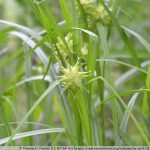
Morgenstern sedge, Carex grayi: Care instructions from A-Z
The morning star sedge is a robust plant. But this is not the only quality that makes the plant easy to care for. Because the Morgenstern sedge is also extremely flexible and adaptable in terms of soil and location. However, one small "disadvantage" has to be mentioned: it grows more slowly compared to other sedges. The name "Morgenstern" goes back to the appearance of the fruit.

Schnurbbaum 'Little Baby' houseplant, Sophora prostrata | care
The Sophora prostrata, better known as the pagoda tree, has an unusual, interesting appearance. The "Little Baby" variety is particularly popular because of its lush and colorful flowers. Strongly twisting branches give the shrub a bizarre look. As a solitary plant, it can be planted in the garden or in pots on terraces and balconies. In order to enjoy outdoor and indoor plants for a long time, optimal care is essential.
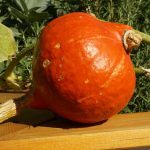
Growing Hokkaido Pumpkin: Care from A - Z | Cultivation & harvest
Autumn time is pumpkin time. One of the most popular pumpkins is the Hokkaido. The orange-red pumpkin with the bright pulp is so popular because you don't have to peel it to prepare it. Since the climate in its Japanese homeland is similar to ours in Central Europe, the vegetable with the sonorous name Cucurbita maxima Duchesne ssp. maxima convar. Maxima 'Red Kuri', or Hokkaido pumpkin for short, can also be grown in home gardens with little effort.

Miracle flower, Mirabilis jalapa: care instructions from A-Z
Night owls among the hobby gardeners don't want to miss the wonder flower. The floral magical creature from tropical regions only unfolds its picturesque splendor in the evening. The unorthodox heyday does not mean that a Mirabilis jalapa makes itself unpopular with capricious claims. These instructions illuminate all aspects of uncomplicated care. A selection of beautiful varieties invites you to browse in search of your personal favorite miracle flowers.

Storchenschnabel, Geranium: cutting and care from A-Z
The cranesbill is a particularly popular garden plant, of which there are around 400 different species. The plant is characterized by its attractive foliage and beautiful flowers that bloom from March to October. Not to be forgotten are its decorative fruit stands, which also decorate the garden. As beautiful as the cranesbill is, it is also easy to care for. Because from sowing to wintering, the popular perennial does not require a green thumb and can also be cultivated by beginners without any problems.

Zigzag shrub, Corokia cotoneaster: care from A-Z
There are several zigzag shrubs, one of which is the Corokia cotoneaster. It is mainly used as a container plant and inspires visually with its striking, bizarre growth. When it comes to nursing, he does not have any great demands. But plant lovers should do justice to those who own it, so that it grows healthily and gives pleasure for many years to come. In this article you will find out what is important when it comes to care and how to properly plant, water, fertilize and cut.
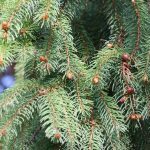
Spruce, Picea: species, growth, plants and care ABC
We encounter spruces in many places in this country. In Central Europe, however, only the Norway spruce (Picea abies) is native. However, there are many species that you can plant out in the garden. Dwarf forms can be kept in the bucket. The easy-care conifers are suitable in the garden as single or group trees. However, you should not plant the shallow roots near house walls or garden paths, as their root force can cause severe damage.
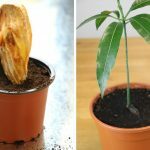
Mango tree, Mangifera indica: care from A-Z | Mango plant
In Germany the mango tree is kept almost exclusively as a container plant because it is not winter hardy. It rarely bears flowers and fruits in this country, if at all. He feels most comfortable in heated greenhouses and winter gardens. With a little patience and the right care, a beautiful little tree can be grown from the core of a suitable fruit. This is a bit of a hassle but well worth the effort.

Linden, linden tree, tilia: planting and care
The linden is one of the most popular deciduous trees in Germany and Europe. The linden tree is not only used for wood or honey from the flowers, the trees have a very special charm that will unfold as an ornamental plant in your own garden. If you decide to plant a linden tree, you will enjoy the giant for decades as long as the care is right. Every linden tree is different, but not the care.
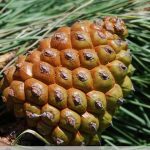
Pine tree, Pinus pinea: Care of the pine tree | Winter hardiness & growth
The pine tree is one of the most famous conifer species in Europe and the Middle East. Recognizable by the characteristic crown and the intense needle smell, it is a popular plant in Central European gardens. The rapid growth of the pine tree enables a state tree to be established at an early stage. When keeping the Mediterranean plant, a few points must be observed so that the plant will do well over a long period of time.

Curry herb, Helichrysum italicum: care and cutting
Are you a fan of curry, Mediterranean spices or aromatic green oases? Helichrysum italicum, better known under the name curry herb, is one from the Mediterranean region Original aromatic and ornamental plant, the leaves and flowers of which are used in numerous dishes can. Adequate care is required in order to be able to enjoy the golden yellow flowers in full splendor and the intense smell. In particular, the wintering of the daisy family must not be ignored.

Bean tree, cigar tree, catalpa | Tree with pods / beans
Thin bean-like fruits hang from the branches. A midsummer bloom that resembles trumpets. The bean tree is a unique ornamental plant whose beans and flowers immediately attract attention. Together with the characteristic crown, the genus has established itself in Central Europe. The plant can be kept in pots and outdoors, which is what makes the bean tree so popular. How to properly care for the cigar tree, learn from this article.
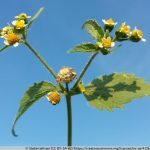
French cabbage, button cabbage, galinsoga: care from A-Z
The French herb also bears the nickname "garden plague", but wrongly if the care of the tasty and healthy herb is right. Since the button herb feels at home almost everywhere, it is also very easy to care for. Because it also grows preferentially at the edges of fields and roads in fields and in many gardens. Farmers are not thrilled when the cabbage appears between their potatoes and beets, but cooks increasingly prefer Galinsoga in the kitchen, as it is very suitable for salads.

Easter cactus, Hatiora: care from A-Z | Spring cactus
The Easter cactus, also known as the spring cactus, is often described as an easy-care diva. This is because it is easy to care for, but has special demands when it comes to flowering. Because if its conditions are not met, it refuses to flower or, quite diva-like, simply throws off buds and flowers. However, if it is satisfied with its location and care, it will thank you every year with a new splendor of flowers.

African violets, Saintpaulia ionantha: care and location
African violets have been popular houseplants for decades as they bloom abundantly. The classic flower colors of the plants are dark purple, white and pink. Today there are around 2,000 hybrid varieties, so that no wish remains unfulfilled when it comes to choosing. The flower color today ranges from white to dark purple, with a wide variety of shades being offered. You can also choose between single and double flowers. The height of the plants including the flower is 10 to 40 centimeters.
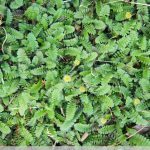
Feather pads, Cotula potentillina: care | Lawn replacement
The plumage is very popular in local areas, especially as a substitute for lawn, because it is relatively easy to care for and undemanding. But it doesn't work entirely without care. Due to the low growth height and the finely structured leaves there is a risk of being displaced. Proper care prevents that. The plant guide explains what this looks like and what to look out for when replacing lawns with plants.

Bat flower | Care of the Tacca chantrieri from A - Z
The bat flower is an exotic beauty from tropical climes that originally comes from the southeastern part of Asia. The plant grows in the herbaceous undergrowth and prefers warm, humid weather. If you want to cultivate the plant, you need a little tact, because the care of Tacca chantrieri requires a lot of attention. The requirements for temperature, water and light are very specific. However, some devices increase the success of cultivation. If you manage to create a perfect environment, you will be rewarded with beautiful flowers - which give the plant its name.
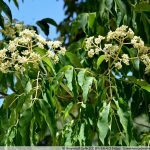
Thousand flower bush, bees tree, Tetradium daniellii: care
Tetradium daniellii is a wood that is becoming more and more popular. It is a valuable source of food for wild bees, bumblebees and butterflies. When other shrubs and herbs have finished their flowering period, the beehive tree runs into full swing again. Umbel flowers can be observed on the shrub until October, which are located on the branches that were formed in the previous year. The thousand-flower shrub not only impresses with its bloom, but also as an ornamental wood.

Flower ash, Fraxinus ornus: care from A-Z | Is it poisonous?
The flower ash, which is originally native to the eastern Mediterranean and the mountains of southern Europe, is also becoming increasingly popular in our latitudes. Because of the flowers it has been given the name flower ash. The inflorescences look like small bouquets of flowers hanging in the tree. Despite its origins, Fraxinus ornus is absolutely hardy here too and only needs one as a young tree little protection, otherwise the plant is very easy to care for and therefore good for hobby gardeners with little time suitable.
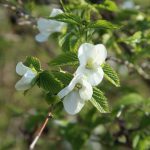
Rosenkerrie, Rhodotypos scandens: Care from A-Z
The Rosenkerrie originally comes from the East Asian region. There the shrub can reach heights of up to five meters. In this country, its growth reaches a maximum height of two meters. Although the Rosenkerrie was to be found in many gardens for a long time, the easy-care, uncomplicated shrub is now a rarity. But don't worry, you can easily get the Rosenkerrie in gardening centers and tree nurseries today.

Temple tree, frangipani, plumeria: care from A-Z
The temple tree, frangipani or also called plumeria, is very popular due to its easy care and especially ideal for beginners as a hobby gardener. It enchants gardens, balconies and terraces with a pleasant, intense scent. It is available in the most beautiful flower colors. Despite the low demands that it places on its care, a few details must be observed so that it thrives splendidly and gives pleasure for many years.

Wire bush, Mühlenbeckia complexa: care from A-Z | Is it hardy?
The so-called wire bush is now one of the most popular ground covers in the garden. The plant is relatively undemanding and requires relatively little maintenance. At the same time, however, it also opens up a multitude of different possibilities for creative garden design. No matter whether as a bed border, as a green accent in a rock garden or in general in combination with other plants - the wire bush is in most cases a really good one and very straightforward Choice.

Evergreen magnolia, Magnolia grandiflora: care from A-Z
Magnolia grandiflora! Everyone would like to have this melodious plant in their home garden. And the tree actually delivers what its beautiful name promises. Not only does its stature grow large with the passage of time, but also its flowers every year. The white splendor smells delicately of lemon, while the green leaves remain present even in winter. But then freezing cold lurks, which this tropical wood does not like so much. A challenge, but solvable.
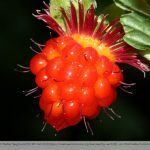
Salmonberry, Magnificent Raspberry, Rubus spectabilis - care from A-Z
The salmonberry, also called splendid raspberry, is one of the exotic fruits in this country. The collective fruits, which resemble a raspberry in appearance, grow on easy-care shrubs. The shrubs are not only suitable as a useful plant, but can also be used as ornamental plants in the garden. But be careful, they reproduce by themselves through runners and can quickly take full possession of the garden.

Hemp palm, Trachycarpus fortunei - care from A-Z
Hemp palms are not only robust and resilient, but also relatively undemanding at the same time. However, in order for Trachycarpus fortunei to thrive successfully, a few factors should be considered. From the choice of location to professional maintenance and winter storage - we have the most important ones Information summarized for you, so that you can cultivate the popular fan palm with certainty succeed!

Standard rose care from A-Z | Cutting rose stems
The care of standard roses is the supreme discipline for hobby gardeners. An optimal location alone is not enough to showcase the queen of flowers as a picturesque rose stem. Proper planting, fertilizing, watering and cutting round off successful cultivation perfectly. It is important to note important differences in comparison with classic bed and shrub roses. This green guide will familiarize you with the flawless process of caring for high-stem roses from A-Z. A beginner's guide explains when and how to cut rose stems in an exemplary manner.

Evening primrose, Oenothera: location, planting and care from A-Z
The evening primrose (bot. Strictly speaking, Oenothera) is a genus of plants with more than 100 species. They originally come from the temperate to tropical areas of the New World, but have also spread to Europe as neophytes. The best known species is probably the common or common evening primrose (bot. Oenothera biennis), which is popular not only as an ornamental but also as a medicinal plant.
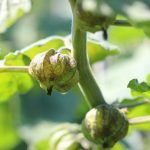
Physalis peruviana, Cape gooseberry - care from A-Z
The physalis, or cape gooseberry, is one of the stars among the exotic fruits. Due to the small fruit size, Physalis peruviana can even ripen in Germany. Cultivation is recommended for those who like exotic, delicious, sweet fruits. However, the Cape gooseberry needs a certain amount of care, as it also has to hibernate and this does not always work without any problems. The fruits themselves have a paper-like shell and are often used for decoration in Asian restaurants and also in this country. The taste is very sweet and juicy, but if the plant is not properly cared for, it will not produce any fruits or will only produce a few specimens!

Queen of the Night, Selenicereus grandiflorus | Cactus care from A-Z
Gorgeous queen of the night. No, this plant has nothing to do with the figure from Wolfgang Amadeus Mozart's "The Magic Flute". It is a cactus of the genus Selenicereus, which is known for its extremely short flowering, which only appears once over the entire year and then dies immediately. Without the flower, the cacti look quite inconspicuous, but are very popular due to the nightly spectacle and their unpretentiousness.
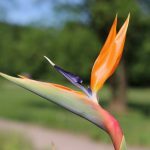
Parrot flower, Strelitzia: care from A-Z | Is it poisonous?
The strelitzia, also known as parrot or bird of paradise flower, is an exotic plant in the plant kingdom thanks to its extravagant flowers. It is multi-colored, with strong orange and blue tones, and outwardly resembles the head of an exotic bird. Under optimal conditions, it lasts for at least four weeks, with a flower reaching a length of up to 20 cm. In our latitudes, this extraordinary plant is not hardy and is therefore cultivated as a houseplant in a pot.
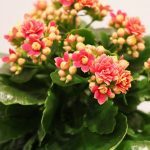
Flammendes Käthchen, Kalanchoe blossfeldiana - care from A-Z
The Flaming Käthchen is a robust plant that does not make great demands on care. Originally the little beauty from Madagascar was only available with red flowers, but now it also delights us with yellow, pink, white and purple flowers. However, in order for these to develop, a little trick is required.

Snow banana, Ensete glaucum - care from A-Z
The snow banana is a robust banana tree from the Ensete genus, which impresses with its rapid growth and imposing stature. It not only grows up to five meters high, but also forms leaves that can reach a length of two meters. Only with a lot of luck does it develop fruits that are inedible for humans but contain seeds. These are used for the propagation of the Ensete glaucum, as other methods do not work.

Japanese grape, Rubus phoenicolasius: care from A-Z
The Japanese grapevine has small, red fruits that make our raspberries or Blackberries are similar, which is why they are also called red-bristled raspberries. The wood of the shrub is reddish and makes the deciduous plant an eye-catcher in the garden even in winter. The plant is rarely found in German gardens, although the shrub does not make great demands on care.
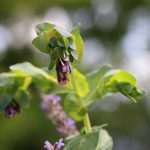
Large wax flower, Cerinthe major: care from A-Z | Is it poisonous?
The large wax flower is a distinctive flower and comes from southern Europe. There the plant is widespread especially in the Mediterranean area and is therefore used to warm and bright site conditions. Since the plant does not have particularly high demands in terms of location and maintenance, it can be cultivated in the local latitudes without any problems. Due to the unusual shape and the intense coloring, the large wax flower stands out as a rarity in the garden bed.

Ilex Crenata - Care from A-Z | Fertilizing, cutting & propagating
The Japanese holly, botanically Ilex crenata, is an evergreen, compact growing shrub. It is enjoying growing popularity, especially in the garden, as a replacement for bed frames made of boxwood. Visually almost indistinguishable from the boxwood, the Japanese holly is not susceptible to frequent Fungal diseases and pests that occur, such as the boxwood moth, attack entire hedges and the plants in no time can die. In addition, the ornamental shrub is not very expensive to maintain.
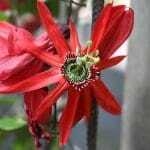
Passion flower, Passiflora racemosa - profile and care information
Passion flowers are truly one of the most interesting tropical plants. Their unique flowers vary in shape, color, and size from species to species. Passiflora racemosa is one of the red passion flowers, also known as grape passion flower. The reason for this are the racemose inflorescences, which are reminiscent of grape blossoms before flowering. There can be about 30 flowers on one inflorescence. Despite its beauty, the South American climbing plant is quite easy to care for.

Split-leaved vinegar tree, fern frond, Rhus typhina Dissecta - care
The split-leaved vinegar tree is, as the name suggests, a plant from the genus Rhus, which comes from the east of the North American continent. The popular ornamental tree is known by many names and delights gardeners and walkers with its growth habit and the intense red color that the foliage takes on in autumn. The fern frond stands hardy and robust in the garden or moves into a bucket and inspires through the unpretentiousness over the year.
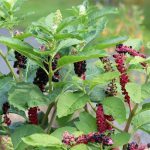
Pokeweed, Phytolacca - instructions for successful care
The pokeweed is a visually appealing plant with hanging or upright flower spikes. It belongs to the genus Phytolaccaceae, of which around 35 species are known. The Phytolacca is widespread all over the world. Most of the species originate in South America. Significantly fewer species come from Africa and Eurasia. In home gardens you will mainly find the American and Asian pokeweed, which, with the right care, thrive in our latitudes.

Hoya kerrii: Caring for the heart leaf plant from A-Z | Is it poisonous?
The heart leaf plant can be found in nurseries and flower shops, especially in February for Valentine's Day. However, this is usually only a single, thick-fleshed leaf that was planted as a cutting in the earth. Hoya kerrii is actually much larger and is a popular flowering house plant in the local latitudes. But since it is slightly poisonous, there should be no small children or free-range or free-flying pets in the household.

Abelie, Abelia grandiflora - Care from A-Z | Is it hardy?
The Abelie or Abelia grandiflora impresses with its predominantly year-round green, rich flowers and a beguiling scent. Planted in the ground as a hedge, it looks beautiful, but this is not recommended in every region if it is a frost-sensitive variety. She makes some demands on the care. There are some rules to be followed here - especially when overwintering.

Indian nettle, Monarda didyma: care and cutting | Is it poisonous?
The Indian nettle Monarda didyma, also known as Monarde and gold balm, is a real eye-catcher, both in the bed and in the tub. Not only the medium-sized, scarlet flowers are irresistible, but also their beguiling, peppermint-like scent. This fireworks display of flowers begins in the first days of June and ends at the end of July. The leaves and flowers of this majestic plant are not poisonous. An aromatic tea can be made from them.
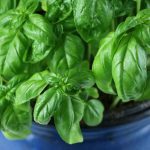
Brewing basil in a pot: Care from A-Z | The ultimate guide
Basil (Ocimum basilicum), also called royal herb, is a versatile and indispensable herb for many. Hardly any tomato dish can do without this herb. The originally Mediterranean herb can be grown well in pots or tubs. It is predominantly cultivated as an annual, although some robust varieties can also be kept for several years. Cultivation and care are unproblematic as long as you pay attention to a few things.
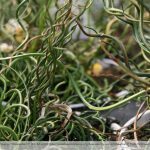
Love curls, Juncus effusus 'Spiralis' - care of corkscrew grass
The love lock is a popular plant that is often kept in the apartment due to the twisted stalks. However, the sweet grass is a marsh plant that is ideal for keeping at the garden pond. The hardy and robust love curls are also easy to care for and sometimes have to be kept in check due to their urge to grow. Except for its rapid spread, it is unproblematic even for beginners to maintain the corkscrew rasp.

Indoor bamboo, Pogonatherum paniceum - care from A-Z
Despite the name, the indoor bamboo is not a plant from the subfamily of the Bambuseae. The name is derived from the leaf shape, which is sometimes reminiscent of bamboo and gives the plant an almost East Asian look. Pogonatherum paniceum is also known under the name Seychelles grass, which indicates the actual shape of the plant more clearly. Caring for the crop is not easy, but the grass is not mimosa.
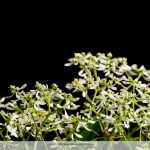
Magic snow, Euphorbia graminea - cultivation, care and overwintering
With fragrant, white veils of flowers, magic snow is there wherever a magnificent gap filler is desired. The graceful gypsophila also lives up to its name as an opulent summer bloomer in the bed and on the balcony. This guide will introduce you to professional cultivation and guide you step by step through uncomplicated care. How you successfully overwinter Euphorbia graminea is no longer hidden from you.

Elephant Ear, Alocasia: Care Instructions | Yellow leaves - what to do
If you want to bring a bit of jungle into your apartment or winter garden, the so-called elephant ear is the best choice. It actually conjures up a touch of rainforest in your own four walls. The reason for this is not least its huge, wide-spreading leaves. The amazingly easy-care plant is something like the ideal indoor tree that comes into its own especially in large rooms and halls.

Rock seeds, Lithodora diffusa - species, location and care
Stone seeds are attractive plants from the Alpine region of southern Europe and are very popular with gardeners due to their modesty. The flowers in different colors add a splash of color in the garden, because the predatory leaf plant can be good for planting rock gardens and borders, as well as lush ground cover. The stone seed is an evergreen plant that is often offered as a perennial, although it is a dwarf wood.
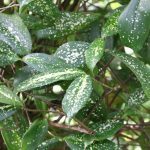
Dragon tree, Dracaena surculosa - care instructions from A-Z
The so-called dragon tree is certainly one of the most thankful and visually impressive houseplants. It can reach an impressive size and is then not infrequently reminiscent of a palm tree. Strictly speaking, it is not even a real tree, but an asparagus plant. Fortunately for all plant lovers, the dragon tree is extremely frugal and does not require a lot of maintenance. Dracaena surculosa is even considered to be extremely easy to care for. Even beginners will get along wonderfully with this houseplant.

Dragon tree, Dracaena deremensis - care and varieties
Dragon trees are one of the most popular indoor plants. On the one hand, they are immensely impressive, but on the other hand, they don't involve a lot of work. So it's no wonder that they like to bring plant lovers into their homes. The most widespread is the species Dracaena surculosa, which is now considered the epitome of the dragon tree. Dracaena deremensis, on the other hand, is much rarer. This species is somewhat smaller in growth and height, but no less attractive.

Star moss, Sagina subulata - cultivation from seeds and care
The star moss is a popular ground cover that is offered in numerous color variations. The plant that likes to form true carpets is not a moss, but a fattening herb. It is also known under the name awl fattening herb, but at first glance it looks like a dense moss due to its compact and low growth. Sagina subulata inspires over the summer with a veritable abundance of delicate, white flowers.
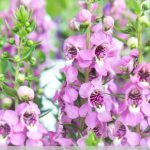
Angelonia angustifolia, Angel Face Flower - Care | Is it hardy?
Angelonia angustifolia - a beautiful flower that shouldn't be missing in a lush summer garden. As a rarity in this country, the majestic beauty is a guaranteed eye-catcher and makes hobby gardeners look jealous.

Noble geraniums, Pelargonium grandiflorum: care from A-Z
With a sea of trumpet-shaped flowers and a seductive scent, Pelargonium grandiflorum are a feast for the senses. The noble geranium delights as lavish houseplants and transforms the balcony into a floral summer fairy tale. The South African flower species has long made a name for itself as a floral talent factory for various balcony plants of the year. The following profile expresses the unique attributes of this noble geranium variety, which in 2006 even became the flower of the year in Baden-Württemberg and Bavaria. A practical guide for care from A-Z leaves no questions unanswered.

Red and yellow pitcher plant, Sarracenia - care from A-Z
The pitcher plant is one of the rarer garden and balcony plants that are guaranteed to be an eye-catcher with their exotic appearance. The marbled, long hose with its hood is a special type of plant that is so seldom to be admired. The pitcher plant is a carnivorous plant that feeds on insects. Both indoors and outdoors, it traps the microorganisms and thus procures their nutrients. The care and cultivation in the local regions requires a little caution, but pitcher plants are quite easy to care for.
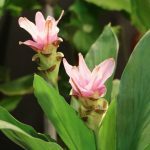
Turmeric plant, saffron root - location and care | Curcuma alismatifolia
Saffron root comes from the ginger family. Its home is in Australia and Asia, but in this country it can also be cultivated as a houseplant or garden plant. It is a bulbous plant that not only grows in height but also in width. Curcuma alismatifolia - as the botanical name is - is not evergreen, it begins to lose its leaves at the latest at the beginning of winter. The complete leaves are gradually thrown off and at the latest then it is time for wintering. In spring, the first flower stems form again, the flower color varies from purple to pink to white. Curcuma is very popular among hobby gardeners, especially because of its large, lush green leaves and beautiful flowers.
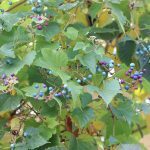
Ampelopsis brevipedunculata, Ussuri-Scheinrebe - care information
The Ussuri false vine or Ampelopsis brevipedunculata is the ideal choice for everyone who wants to bring climbing plants into the house or garden. It is considered to be undemanding and easy to care for. Since it is also forgiving of care mistakes, the false vine is perfect for beginners. In addition, the plant grows extremely lush and bears visually attractive fruits. And because it is generally frost-hardy, it may even be possible to overwinter outdoors.
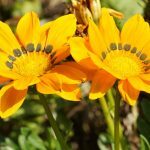
Gazanie, Gazania - sowing, care and wintering of midday gold
The gazanie, also known as midday gold, closes its flowers in cloudy weather. The graceful plant belongs to the daisy family and is native to East and South Africa. The sixteen species known worldwide bloom in various colors. In the local latitudes they are known as annual plants, but they can be one brought little skill and knowledge even over the cold winters and thus cultivated for several years will.

Portulaca grandiflora flowers, purslane florets - care from A-Z
Purslane is a real blooming miracle among garden flowers. With a suitable location and dry soil, the plant will open numerous flowers between June and September. But there are also a few mistakes in maintenance that Portulaca is not so quick to forgive. On the contrary, if there are serious mistakes, the flowers die quickly. But with the right background knowledge, the purslane delight the hobby gardener with a wonderful sight.

Laburnum - location, planting and care instructions
The small genus of the laburnum has enjoyed great popularity as an ornamental plant for several centuries due to the intense yellow color of the flowers. Its modesty and adaptable nature make Laburnum the ideal ornamental shrubs that do not require a lot of care and can even withstand winter without protection. Nevertheless, you have to exercise caution if you have a laburnum in the garden, as the petals are extremely poisonous for humans, pets and farm animals.

Red flax, Linum grandiflorum, Prachtlein - sowing and care
The large-flowered flax Linum grandiflorum makes a powerful impression. The reason for this is its fascinating, bright red flowers. It is not for nothing that it is also called a splendor. It is perfect for closing gaps in a perennial bed with a real feast for the eyes. But it also looks great in flower borders. He also delivers cut flowers. It is practical that the plant is extremely undemanding and very easy to care for.

Swamp gladiolus, split pen, gladiolus palustris - care instructions
The marsh gladiolus and the garden pond at home simply belong together. She feels completely at ease in its bank area. So it's no wonder that it is one of the most popular specimens when it comes to bank planting. It certainly also plays a role that the split pen, as the plant is also called, is extremely undemanding and easy to care for. It may even prove to be hardy up to a point.
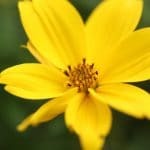
Goldmarie, Zweizahn, Bidens ferulifolia - varieties and care instructions
The Goldmarie 'Bidens ferulifolia' also known as two-toothed, is a perennial and one of the most thankful summer bloomers, with more than 250 varieties worldwide. This attractive plant owes the name 'two-tooth' to its toothed fruits. Its yellow, orange, reddish or two-tone flowers develop a lush pile that sets colorful accents in beds, bowls, pots or hanging baskets. The abundance of flowers continues from spring to autumn.
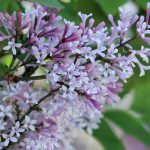
Dwarf lilac, Syringa meyeri - care in the garden / tubs and cutting
The dwarf lilac shows itself as the small edition of the lilac. It is in no way inferior to the conventional lilac in terms of fragrance, compactness and extraordinarily lush abundance of flowers. Not only does it look good in the flower bed, its small format is especially suitable for cultivation in pots. Everything you should know about caring for dwarf lilacs is detailed at Plantopedia.

Marguerite trunks: everything about the care of marguerite trees
Marguerites are among the most popular plants in the garden and balcony and are excellent even in the winter garden. In comparison to the native meadow marguerite (bot. Leucanthemum vulgare) is suitable for keeping as a tree and thus enables completely different design options. Her origins, the Canary Islands, make her a true sun worshiper who is easy to hold and hardly requires any attention. Except over the winter, because the island plant cannot tolerate the cold.

Fir fronds, Hippuris vulgaris - care and cutting
A garden pond is the very personal idyll in your own garden. But it only becomes really beautiful when it contains the right aquatic plants. Plants such as the fir frond give the pond its individual face and at the same time maintain the biological balance. Experts recommend that around 30 percent of the garden pond should be covered with aquatic plants. The easy-care fir frond is the ideal aquatic plant for beginners and professionals.

Love pearl bush, beautiful fruit, Callicarpa bodinieri - care from A-Z
From the beautiful fruit (bot. Callicarpa) there are numerous different varieties that are quite different. The American beautiful fruit (Callicarpa americana) is native to the eastern part of North America and its fruits are edible. In contrast, the Chinese beautiful fruit comes from the high altitudes of central and western China and is poisonous to humans. This makes it clear that it makes perfect sense to know exactly which type of beautiful fruit is in the garden.

Barberry, Berberis vulgaris - care, cutting and propagation
The barberry, also called sour thorn or vinegar berry, is a very old plant that is also native to Europe. Since it grows particularly quickly and densely, the shrubs are very suitable as hedge plants. Berberis vulgari is also a welcome plant for many animals and insects. Its golden yellow flowers serve as food for bees and other insects. They are a welcome nesting and breeding place for birds. Hedgehogs also like to use the barberries as a hiding place.

Privet, Ligustrum vulgare, privet hedge: plant, fertilize and multiply
The common privet is very popular as a predominantly evergreen hedge and as a solitary plant it decorates garden beds, terraces and balconies tastefully. It shows itself to be very resilient in many areas and is characterized by a high level of tolerance even in the case of care errors. But for dense, vigorous growth, you should still follow Plantopedia's planting and care tips.
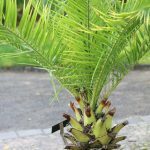
Washingtonia robusta, petticoat palm - care from A-Z
Washingtonia robusta is a species of palm that brings the flair of California and Mexican sandy beaches home. In terms of care, it is considered to be easy to handle, but it still has some basic requirements in order to be able to grow vigorously and stay healthy for a long time. At Plantopedia you can find out how you can meet the low maintenance requirements, how you can easily reproduce and overwinter this fan palm and whether it is poisonous.
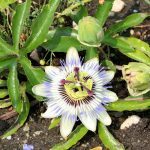
Passion flower in the garden - cultivation, location and care from A-Z
The passion flower is a climbing and climbing plant with over 500 species that adorn gardens, terraces and balconies and sometimes also apartments. Proper care is required to ensure that it provides long-term pleasure. At Plantopedia you can find out what you should pay attention to, how the cultivation works and whether the plant is poisonous.

Planting rhubarb: sowing, care and fertilization
Rhubarb, along with asparagus, spinach and strawberries, is a part of every spring and the sticks in the red-greenish hues are good as jam, syrup and in cakes. The original Asian knotweed grows easily in German gardens and can be used from May to St. June to be harvested. The "barbarian root", as the Romans called Rheum rhabarbarum, inspires with its slightly sour taste, which is typical of the stem vegetables.
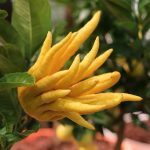
Lemon, Buddha's hand, Citrus medica - care of the lemon
The lemon 'Buddha's hand' is probably the most unusual form of citrus medica. It comes from Southeast Asia and is mainly used for the production of citron pate. Their scent is sweet. The flowering time is all year round. The approx. 10-20cm long fruits are reminiscent of hands and fingers: hence the name 'Buddha's hand'. In Buddhism it is used as an offering in temples.

Horehound Marrubium vulgare - facts and figures
Horehound is a perennial plant in the mint family. The plant, which comes from the Mediterranean region, has a high healing effect on coughs and other respiratory diseases. Because of the bitter substances it contains, horehound is not used as a spice plant.

Pipe bush, Philadelphus - care instructions
The pipe shrub, which is also known as false jasmine, scented or peasant jasmine, is a magnificent and undemanding ornamental shrub. It has become an indispensable part of country house or cottage gardens. Its pure white, double or unfilled flowers, which often exude an intense fragrance, are particularly elegant. In individual position, in combination with other trees or as a hedge plant, it unfolds its full splendor.
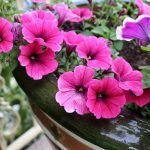
Petunias, hanging petunias, petunia - care and wintering
Their bright and varied colors make hanging petunias a popular plant. Due to their climbing habit, the nightshade family can often be found on balconies and wall parapets. The flowering time of the beauties extends from mid-spring to autumn. In order to optimally support petunias, a number of requirements must be met in terms of location and care.

Lucky clover, lucky clover, Oxalis tetraphylla - cultivation + care
Lucky clover is well known as a special souvenir and pretty table decoration for the New Year's Eve party. Anyone who only reduces the dainty Oxalis tetraphylla to this function fails to recognize its potential as an abundantly flowering potted plant for the windowsill and the summer balcony. Explore a detailed growing and care guide here. This is how a lucky clover thrives vital and healthy for many years.

Phalaenopsis, butterfly orchid - care & repotting
The Phalaenopsis is one of the front runners among the indoor plants and the most popular of all orchids. The shapely and blooming plants come in countless color variations. Even if orchids are often decried as little divas, the Phalaenopsis tolerates minor care errors, so that even beginners can try their hand at them. With appropriate care, they impress many weeks a year with their breathtaking blossoms.

Yucca palm, palm lily - care instructions
The yucca palm, called the palm lily because of its lily-like shape, is a timeless plant. It once adorned hippie apartments from the 1960s and now beautifies modern living spaces. The yucca became popular and known for its exotic appearance. Amazingly, this plant genus is an 'asparagus plant' originating in Central America. Despite its great instinct for self-preservation, the yucca cannot do without human care.
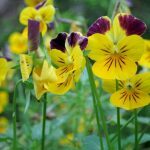
Garden Pansy, Viola - Planting and Care Instructions
With its almost infinite variety of colors from white to blue and purple to orange, yellow and red as well as the long flowering period, garden pansies (viola) are among the classics in public and private Gardens. Especially in spring they provide the first splash of color in the otherwise dreary garden. But they are also one of the last plants to decorate house entrances and balconies in late autumn.
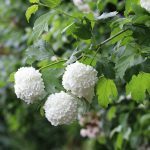
Common snowball, Viburnum opulus - care instructions
Common snowball is the name of this shrub, which every garden and balcony has a beautiful blossoms and in autumn with berries a fresh color accent in the increasingly colorless one Environment sets. The perennial plant is winter-proof and will thrive for many years if you meet a few conditions, which you will find out in the detailed care instructions for the Viburnum opulus.

Three-masted flower, tradescantia, god's eye - care instructions
Not only do these extraordinary wildflowers offer something completely different for the garden, they are also easy to grow and require little maintenance. We are talking about the three-masted flower, also called God's eye or Wilder Heinrich. The three-winged flowers usually appear in blue or purple, sometimes pink or white. Some species are indoor plants, others are suitable for outdoor use.
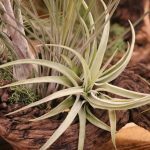
Tillandsia, Tillandsia - species & care instructions
With over 550 species, the plant genus Tillandsia is considered to be the most species-rich within the bromeliad family (Bromeliaceae). Due to their ease of care and their attractive leaves, Tillandsia have enjoyed increasing popularity as a houseplant for years. The shape and color of the plant, which is also often referred to as an air plant, amaze many. The following care instructions show how it grows and thrives optimally.
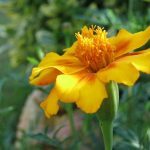
Tagetes, marigold - growing from seeds and care
Throughout the summer, the brightly colored flowers of the marigolds shine in competition with the sun. Already in the 16th In the 19th century, the plant came to Europe from Central America and has been a long-runner in our gardens ever since. Thanks to its modesty, it does not need daily attention from the gardener. How to do everything correctly with the care of the marigold, you will learn in this guide.

Bird of Paradise, Strelitzia reginae - care instructions
The bird of paradise flower exudes a tropical flair with its magnificent flowers and large green leaves. Like an exotic fan, the orange-yellow and blue glowing petals stretch towards the sky. You can't tell by looking at it, but the Strelitzia reginae is comparatively undemanding. She thanks good care with intensive growth and large flowers. The care instructions explain the best way to do this.
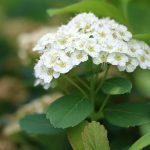
Spierstrauch, Spiraea - species, care - instructions
The sparaceous shrub is one of the most popular garden plants, as there is hardly a plant that is less demanding in terms of care and location. It belongs to the rose family and is native to the Nordic climate. Every year the different species of Spiraea surprise with an abundance of flowers and colors and blend wonderfully into the garden landscape.

Heavenly bamboo, sacred bamboo, Nandina domestica - care instructions
In beds and buckets, sky bamboo enchants us all year round with decorative attributes. The leaflets have a pretty play of colors from reddish to green to purple-red. In summer, white panicle blossoms perch above the distinctive foliage, followed by bright red berries in autumn. These practical care instructions show how sacred bamboo fulfills its role as a supporting element in creative garden design with flying colors.

Indian nettle, gold balm, Monarda didyma - care instructions
The hardy Indian nettle, which is also known under the names of gold balm, horse mint, bee balm or wild bergamot, cuts a fine figure in every summer garden. Already the Indians in North America recognized the healing properties of the mint family. Today the graceful perennial is mainly used as an ornamental plant and because of its bewitching, aromatic In the local gardens and is also wonderfully suitable as a natural garden Bee pasture.
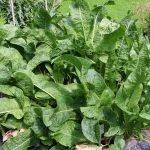
Growing horseradish - sowing, planting, caring for and harvesting
Horseradish, also called horseradish, is one of the well-known root vegetables and spices. However, most of them use it in a preserved, ready-to-use form. Few hobby gardeners cultivate their own horseradish these days. Growing Armoracia rusticana is not that difficult if you know how it works. In this guide you will find out how you can cultivate your horseradish yourself in the garden.

Lonicera, honeysuckle, garden honeysuckle - care
The garden honeysuckle (Lonicera) is an old plant that was often found in cottage gardens in the past. The woody climbing plant effortlessly climbs house facades and shed walls. The fascinating, tubular flower clusters of the honeysuckle appear in spring and have an intense, sweet smell. Lonicera is also robust and hardy, but a few important points should be met in terms of care.
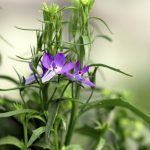
Male faithful, Lobelia erinus, blue lobelia - care instructions
The beautiful Männertreu is very suitable for filling gaps in the bed. More than that, this bluebell plant shines in fascinating blue flowers. Magical flowers open tirelessly throughout the summer and fill some corners that would otherwise remain bare. Known as Lobelia erinus, you should know that all parts of plants are poisonous to humans and animals.

Girl eyes, coreopsis, beautiful face - care instructions
The coreopsis, girl's eye in the garden, presents itself gracefully in bright yellow. A dark circle adorns the basket-shaped inflorescences as charming as a girl's eyes. Few plants are as grateful as the beautiful face (Coreopsis), even with a minimal amount of care. The better they are cared for, the more eagerly they bloom. Therefore, in this guide, we will show you how to make the Coreopsis bloom.

Colored nettle, coleus, solenostemon - care instructions
Colored nettles have the most spectacular foliage in colors and color combinations that no other plant species can offer. The unique color patterns of the leaves pull many gardeners under their spell. The plants are very easy to care for and can not only be cultivated as indoor plants, but can also be planted in pots or window boxes, hanging baskets or in beds. These care instructions show you how to do everything correctly with the colored nettle.

Jasmine Plant, Jasminum - Care Instructions
The jasmine plant impresses with its lush blooms of countless white or yellow star blossoms that exude a sweet scent. Although the plant is not hardy and needs a cool winter quarters from October to March, it is otherwise undemanding and easy to care for. If you follow the tips in the care instructions, even beginners can enjoy this plant for many years.
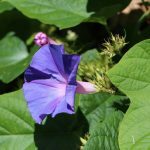
Morning glory, morning glory, Ipomoea species - care instructions
The morning glory displays its brilliant abundance of flowers throughout the summer. As busy climbing plants, tropical Ipomoea species offer us an abundance of creative scenarios that transform beds, facades and balconies into a heavenly flower paradise. Declared as frugal and undemanding, the funnel winch cannot do without horticultural attention. These care instructions explain in a practical way what the picturesque climbing artist really values.

Hard-working Lieschen, Impatiens walleriana - care instructions
The industrious Lieschen is an extremely popular guest in flower beds, balcony boxes, hanging baskets and pots at home. The decorative ornamental plant blooms long and intensively and rewards good care with a veritable sea of flowers. The care instructions explain everything you need to know about keeping the Impatiens properly and appropriately walleriana and shows how you can optimize growth and flowering with little effort can promote.
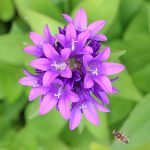
Bluebells, campanula - care and wintering
The bellflower with its mostly delicate blue flowers is not only a feast for the eyes for every window sill, but is also good to look at on the terrace or balcony. Due to its easy-care and robust nature, the mostly perennial Campanula is particularly suitable for beginners. The care instructions show what you have to take into account so that you can enjoy this plant for a long time.
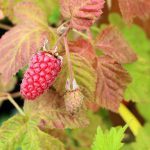
Growing raspberries - planting, care and cutting
Raspberries from our own cultivation outperform the fruits on the edge of the forest in every way. If you combine the modern summer and autumn varieties, you extend the harvest time for juicy, sweet berries to several months. The requirements for planting, care and pruning are less complex than it seems. These instructions will guide you step by step through the successful cultivation of the long-lived berry bushes.
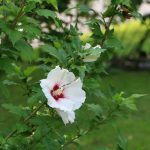
Hibiscus - care instructions as a garden and houseplant
As a houseplant, the hibiscus needs a little more care than in the garden. This is normal because the conditions in the bucket are different from those in the field. Nevertheless, it is worth taking a look at the care instructions, because the so-called Chinese Zimmerhibiskus feels very comfortable indoors and pampers its owners with beautiful Blossoms.
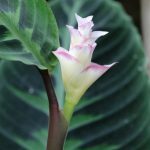
Korbmarante, Calathea - species and care instructions
The basket marante is an extremely decorative leaf ornament. Their elegant leaves stand out with their different colors and distinctive patterns. In tropical regions they were used as roof cover and to weave baskets, which earned them the name 'Calathea'. It comes from the Greek and means something like 'basket'. All of this makes this typical jungle plant an attractive and extraordinary houseplant.
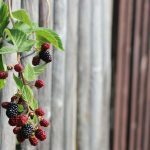
Growing blackberries - varieties, care and cutting
Their blue-black color gives blackberries a magical aura. Their fruity aroma and seductive scent tell of carefree summer days in grandmother's garden. High time to grow the delicious blackberries yourself. Modern strains are neither scratchy nor demanding, as long as you dig a little deeper into the subject. Here you can find information about recommended varieties, professional care and correct cutting.
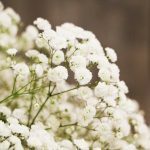
Baby's breath, gypsophila, panicle of gypsophila - care instructions
With its graceful appearance, the gypsophila is probably one of the most charming plants alongside roses. They not only adorn the bouquet in an extraordinary way, but also the flowerbed. The gypsophila transforms bald spots over a large area and can be combined with almost any flower. The hobby gardener has the choice between an upright growing and a creeping gypsophila, which is also known as the panicle of gypsophila.

Growing green / yellow zucchini - sowing, planting and care
The zucchini delights hobby gardeners not only with its tasty fruits, but also with its attractive yellow flowers and large deciduous leaves. The frugal pumpkin plant is considered a particularly healthy vegetable and can easily be grown in the garden in Central Europe. In the instructions you will learn everything about sowing, caring for and harvesting zucchini.
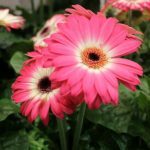
Gerbera as a houseplant - care instructions
The gerbera belongs to the daisy family and is one of the most popular cut flowers out there. If you don't just want to admire this true beauty among plants in the garden and in the vase, you can easily bring it into your home as a houseplant. This means you can enjoy the beautiful gerbera all year round.

Triplet flower, bougainvillea - planting, care and wintering
As a floral ambassador of tropical blooms, the triple flower attracts everyone's attention in the summer garden. The exotic bougainvillea owes its catchy name to three delicate, cream-colored flowers framed by three brightly colored, large bracts. From spring to autumn, the wonderful ornamental wood inspires with its opulent flower dress. So much splendor needs to be looked after professionally. All information on planting, care and wintering can be found here.

Funkia, hostas, funkia, heart leaf lilies - care instructions
Hostas, also known as heart lilies, are among the most beautiful ornamental foliage shrubs with around 40 wild species. They come mainly from Japan, where they thrive mainly in cool, humid mountain forests. The dark or multi-colored foliage with large or small leaves creates unique accents, even in areas of the garden where hardly anything else grows. Not to forget the filigree flowers above the foliage.
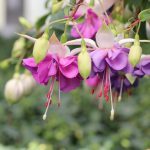
Fuchsias, fuchsia - planting, care and wintering
Fuchsias have made a name for themselves as classics in creative plant compositions for the summer garden. Thanks to the hardy varieties, the colorful festival with the unmistakable flowers is not limited to the balcony and terrace. Find out here how to skillfully plant the woody beauties of flowers in pots and beds. Benefit from detailed instructions on care and wintering.
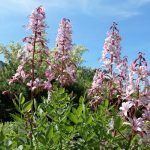
Burning bush, diptam, dictamnus - care instructions
The burning bush is an intensely lemon and vanilla scented perennial with elegant foliage and pretty inflorescences. Its name is based on a rare and fascinating feature. On hot summer days, their capsule fruits give off ethereal inflammatory vapors, so that at dusk, when there is no wind at the same time, small bluish flames light up. That makes this plant a real rarity in the home garden.
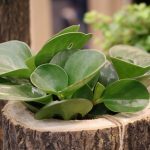
Ornamental pepper, Peperomia obtusifolia - care and reproduction
Dwarf or ornamental pepper Peperomia obtusifolia is a decorative houseplant with a wide variety of leaf shapes, colors and structures. Every single plant has its own look. With its green, reddish or multi-colored leaves, it unfolds its effect in the window sill as well as as a table decoration or in an arrangement with other indoor plants. It's not just collectors who really enjoy this diverse plant.
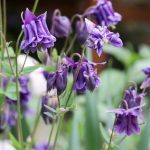
Columbines, Aquilegia - Growing the plant and caring for it
One of the oldest flowering plants still occurring today are the columbines. One has this plant with outstanding elegance and the futuristic looking flowers in the Human history has given numerous names: elf shoe, god hat or fool's cap, to name just one to name a few. In this guide you will learn how to cultivate the easy-care columbines in your own garden.
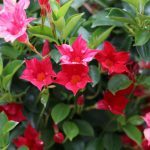
Dipladenia, Mandevilla - varieties - care instructions and overwintering
The Dipladenia was originally a liana plant and is now cultivated as a hanging climber or subshrub. This exotic-looking permanent bloomer is sensitive to frost and is therefore mainly kept as a houseplant. These plants are real blooming wonders. Its bright flowers shine in a wide variety of colors and shades and form a striking contrast to the green foliage. Plant lovers also appreciate the uncomplicated care of this extraordinary plant.
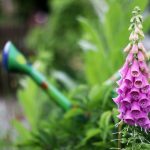
Foxglove, digitalis - care instructions
The foxglove is a summer plant that can not only be admired in its splendor of colors in forest clearings or roadsides, but is also a popular plant in the home garden. Here its flowers beguile in apricot-colored, pink, yellow or white nuances. Thimbles prefer shady places and bloom as a biennial. These care instructions provide you with useful tips and information so that the thimbles also thrive in your garden.

Anthurium, anthurium, flamingo flowers - care and reproduction
Everyone knows it, the bright red flamingo flower. With lush green leaves and the beautiful red bracts, it sets accents in the private home or in business premises. In our special care instructions for the flamingo flower, we explain how anthuriums are cared for, as these are originally called tropical plants.
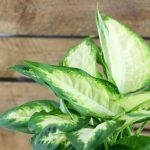
Dieffenbachie, Dieffenbachia - care instructions
The easy-to-care for Dieffenbachia is an attractive plant. Its patterned leaves are strikingly beautiful. If you are looking for indoor plants with persistent growth, choose the right variety with the Dieffenbachia. Quite small as a young plant, it can be set up anywhere, while later it should have a nice location. Above all, however, it is easy to care for and gives great pleasure even to people without green fingers.

Peonies, paeonia - planting, care and cutting
The splendor of the flowers is a revelation for every gardener, from which his grandchildren can still benefit. Peonies provide a floral wow effect in the spring garden for decades. The romantic cottage garden plants combine a unique abundance of flowers with robust longevity. With these advantages, they convince both as a perennial and as a bushy shrub. These instructions explain in detail how to properly plant, care for and prune Paeonia.

Dahlias, Dahlia - planting, care and wintering
In the middle of summer, this year's dahlia bloom will start. Dahlias, the South American flowers, tirelessly enchant the garden and balcony with their abundant variety of flowers and colors until well into autumn. How good that the many thousands of varieties pull together, at least when it comes to cultivation. Read here how to plant, care for and overwinter Dahlia in an exemplary manner.
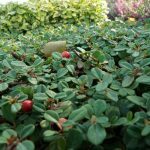
Cotoneaster, cotoneaster - care instructions
With its white flowers, bright red ornamental fruits and green oval leaves, the cotoneaster is one of the most colorful and attractive ground creeps in this country. The frugal, hardy and hardy plant is therefore widespread in Central European gardens, cemeteries and parks. The care instructions show how to properly cultivate the crawfish. The ornamental plant already rewards a minimum of care with many flowers.
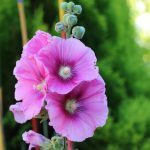
Hollyhocks, hollyhock, Alcea rosea - care instructions
With its bright flowers, the Alcea rosea is an ornament for every garden. The height of the hollyhock makes it an eye-catcher. The perennial attracts attention with its oversized flowers in a wide variety of colors. It is also known under the name peasant rose or poplar mallow. In the summer bed, the sun worshiper ennobles every accompanying plant. With these care instructions you will find out what you should pay particular attention to.
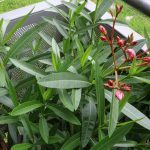
Oleander, Nerium oleander - planting, care and cutting
The oleander, also known as the evergreen rose laurel, is native to warm areas such as the Mediterranean. That is why we prefer to cultivate the Mediterranean flowering plant as a container plant. There are now a large number of different types of oleander on the market, which differ not only in the color of their flowers. In these care instructions you will find out how to do everything right when caring for the evergreen flowering shrub.
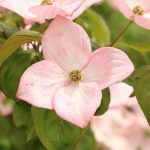
Dogwood, flower dogwood, red dogwood, cornus - care
A good friend of the gardener is the cornus, dogwood, also known as red dogwood or flower dogwood. In addition, it is usually not missing in any garden and also looks good in parks or on roadsides. It delights the eye with its leaves until late autumn, in spring with the beautiful inflorescences and in winter with the strikingly colored bark. With optimal care and location, it is a frugal plant that therefore requires little effort and thrives best as a solitary plant.

Japanese maple, red Japanese maple, Acer palmatum - care instructions
Japanese maple is a fundamental element in traditional Japanese garden design, especially its red-leaved varieties. Red Japanese maple is also extremely popular among German hobby gardeners. In addition to green varieties, as pond border planting, background or solitary plants, there are impressive color combinations. The splendid autumn colors of the filigree leaves, which show up in different shades of red, and the coral-red bark of some varieties make the unique ornamental value of this woody plant.
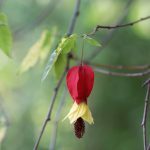
Beautiful mallow, abutilon, room maple - care and overwintering
Even if the mallow is also known as the indoor maple, the decorative plant loves to spend the summer outdoors as a container plant on the balcony or terrace. But in winter it has to be kept warm because it is not hardy. It forms its decorative flowers in a wide variety of colors, especially in the summer months.

Pomegranate tree, Punica granatum - growing, care and wintering
The pomegranate tree is probably one of the most important loosestrife for humans. Already in ancient times, the pomegranate was given great importance as a symbol of fertility and the red ones Fruits were a special source of food in warm because of their numerous kernels and the fruit juice Regions. In 16. In the 19th century, the first specimens were found in the orangeries of the European royal houses and over time the pomegranate tree was cultivated as a container plant, which is perfect for German homes.
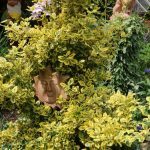
Goldliguster, Ligustrum ovalifolium - care + cutting of the hedge
With the gold liguster there is an appealing alternative to the domestic privet species, which inspires with its winter hardiness and the large, oval leaves. Perfectly suited as an evergreen hedge, it is characterized by its robust nature and is well suited to delimiting Asian garden projects. It originally comes from Japan and South Korea and can be found there as an ornamental plant in many gardens and parks. The berry fruits are a source of food for birds.
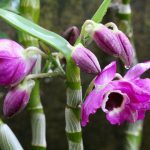
Dendrobium nobile - care, cutting and propagation of the orchid
Dendrobium nobile is also known in Germany as the grape orchid, as the numerous flowers almost look like stand together in vines and, in contrast to the moth orchid (Phalaenopsis), formed directly on the stem will. The East Asian orchid genus delights in blooming over the cold season and enchants with one pleasantly intense fragrance that can be found in all living rooms with the right care thanks to the numerous flowers unfolds.

Cape basket, osteospermum - cultivation, care and reproduction
The cape basket promises a colorful carpet of flowers if it is properly cared for. The flower, which comes from Africa, is one of the easy-care plant species, but mistakes in care, choice of location and type of soil can have fatal consequences. How to meet the requirements of the Osteosperumum can be found in the plant guide.

Ufo plant, Pilea peperomioides - care + help with leaf loss
The ufo plant, botanically Pilea peperomioides, is a rare but extremely decorative ornamental plant. Its name comes from the taler-shaped leaves, which are reminiscent of UFOs and also give it a very special charm. Pilea peperomioides can be grown as a houseplant all year round. The robust plant does not make great demands on maintenance, but you should be careful with the watering. Since it can withstand high levels of humidity, it is also ideal as a decoration for the bathroom.

Vanda orchid - keeping, care in the jar and propagation
Deep blue flowers and a national size characterize the Vanda orchid, which, along with phalaenopsis and grape orchids, is one of the best-known indoor orchids in Germany. Despite its flowers and the intense, lovely aroma, it is not the easiest orchid and requires a lot of care and a suitable location. Its blaze of color makes it a popular flower that, when kept appropriately, likes to grow tall and sprout strongly.

Tortoiseshell, Fibigia clypeata - care information
Because of its leaves, the tortoiseshell is often confused with the crown carnation, which has a similar style. Fibigia clypeata is a popular perennial for the Mediterranean dry garden because it can easily cope with little moisture. Above all, their location in the rock garden makes them a welcome guest who is quite undemanding in terms of care. In addition, it does not need winter protection down to -18 ° C, which makes it ideal for many projects.
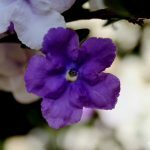
Brunfelsia, Brunfelsia uniflora - care instructions
The flora of the tropics has a lot to offer. In addition to orchids, the fragrant Brunfelsia flowers intoxicate with their aroma and appealing worlds of color. In addition to Brunfelsia americana and Brunfelsia lactea, Brunfelsia uniflora, also known as Manaka, is a real eye-catcher over the winter. Once the blue flowers bloom in all their glory, the dreary winter is gone. All you need to do is care for the poisonous drop plant.
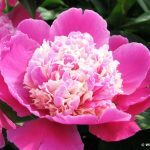
Chinese peony, Paeonia lactiflora 'Cora Stubbs' - care information
Peonies have been cultivated by humans for over 2,000 years and are not only a feast for the eyes, but also seduce the nose with their characteristic aroma. The variety Paeonia lactiflora 'Cora Stubbs' presents itself as a Chinese peony with the expansive Japanese flower shape and a pleasant height. Similar to other peonies, care is quite simple, as the plant is robust and can live for more than 50 years.
Ornamental asparagus, asparagus - care, cutting and help with problems
Ornamental asparagus has the botanical name Asparagus densiflorus and originally comes from South Africa. Due to the lack of winter hardiness, it is mainly used as a potted plant for indoor cultivation. There are different types, which differ in the size of the bill sheets. Due to its decorative properties and relatively easy maintenance, the asparagus has become very popular in domestic living spaces. However, it has to hibernate under special conditions.

Bottle gourd, Lagenaria siceraria - cultivation, care and drying
In Africa and the Mediterranean countries, the bottle gourd has long been known due to its shape. Because this is where the housing is often dried for further use. Lagenaria siceraria has also become more and more popular in the local latitudes in recent years. So it is easy to care for and the unusual shapes are a real eye-catcher, not only in the garden bed. The following describes how to properly care for the calabash and how it can be dried later.

Snowball hydrangea, Hydrangea arborescens 'Annabelle' - care + pruning
In general, hydrangeas have an ambiguous reputation. They are considered to be extremely beautiful to look at, but also extremely sensitive. The hardy snowball hydrangea Annabelle not only pleases the owner with an extremely lush flowering, but is also extremely hardy. With a height of up to 1.5 meters, Hydrangea arborescens are impressive plants that get along well even in cool climates.

Zebra-Haworthie, Haworthia fasciata - care, tips & tricks
The Zebra Haworthie is an easy-care, very undemanding plant of the succulent type that can adapt wonderfully to its surroundings. Due to its robustness, it fits perfectly into the hands of beginners. Haworthia fasciata grows almost everywhere, only in winter it is a bit sensitive and needs to be moved into the house when the temperature is below zero. To ensure that you can enjoy this relatives of the aloe vera for a long time, there are still a few care tips that should be observed.
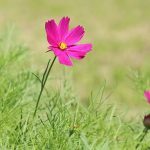
Decorative basket, Cosmos bipinnatus, Cosmea - care information from A-Z
The decorative basket (Cosmos bipinnatus) is one of the summer bloomers that has retained its simple elegance. Above the feathery, lush green foliage sit the white ones or those that appear in various shades of red and pink Flowers that not only look attractive all summer, but also bees and butterflies in the garden Curls. Since the permanent bloomers are easy to care for and even laypeople can reliably sow them, decorative baskets should not be missing in any garden.

Farm hydrangea, garden hydrangea, Hydrangea macrophylla - location + care
The farmer's hydrangea (Hydrangea macrophylla) is a plant that exudes a very special charm in the garden. Their umbrella-shaped inflorescences consist of many individual bluish, pink or white colored single flowers, the form on the subshrub from June and well into September for a wonderful spectacle in the garden care for. Unfortunately, the farmer's hydrangea is not sufficiently frost-resistant so that it can only be planted outdoors in mild locations.
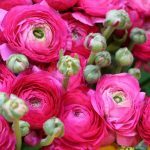
Ranunculus, Ranunculus asiaticus - plant and care for them correctly
Ranunculus (Ranunculus asiaticus) are reminiscent of the noble English roses with their beautiful, double flowers. With its countless flowers, which are available in almost any color and also in two colors, the ranunculus is one of the most attractive harbingers of summer. However, the pretty flower has nothing in common with the rose. Already in the 16th In the 19th century, the buttercup plant came to England from Turkey and for a long time was as important as tulips.
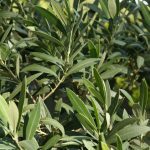
Olive tree, olive tree, Olea europaea - the basics of care
The olive tree, botanically called Olea europaea, is one of the oldest cultivated plants. The wood, which in old age forms a characteristically gnarled and primeval looking trunk, has its origin in the countries around the Mediterranean. We can also grow olive trees and even bear fruit. The prerequisite for this, however, is that some basic rules are observed. Because of the limited winter hardiness of the tree (Olea europaea), proper wintering is essential.
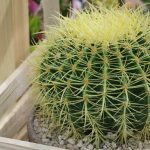
Mother-in-law chair, gold ball cactus, Echinocactus grusonii - care
The golden ball cactus (Echinocactus grusonii), due to its growth shape, which is quite similar to seating furniture, and the long, sharp ones Spines, nicknamed the "mother-in-law chair", is probably one of the most popular in room culture Cacti. In fact, the species is easy to care for and can also grow very old and large. Over the years, the rapidly growing gold ball cactus develops an imposing size. The yellow flowers only appear on specimens from an age of around 20 years.

Finger shrub, five-finger shrub, potentilla - instructions for care
The finger bush is beautiful and easy to care for - no wonder that many hobby gardeners appreciate it very much. Nevertheless, even with this relatively undemanding plant, it is important to pay attention to some details in order to be able to enjoy its splendor undisturbed for a long time.

Fat hen, sedum plant - everything about care and cutting
Seducers are annual or perennial as well as more or less succulent plants. They grow creeping or bushy with heights of up to 60 cm. The fat hen owes its name to the thick-fleshed leaves, which differ in shape and color. The yellow, white or reddish inflorescences are also different. The sedum plant is well suited for green roofs, but also cuts a fine figure in stone and gravel gardens, perennial beds and in pots, on balconies or patios.
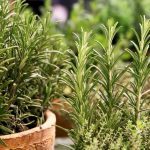
Rosemary, Rosmarinus officinalis - care instructions
Rosemary is a perennial herb in the mint family. The plant comes from the western Mediterranean region and is an indispensable spice in Mediterranean cuisine. As a medicinal plant, rosemary helps against digestive problems and high blood pressure. The herb can be cultivated very well in the garden or in a pot.
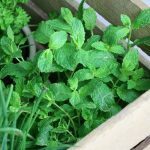
Mint, peppermint, Mentha x piperita - plants, location and care in the garden
Peppermint (Mentha x piperita) is a perennial plant from the mint family. The menthol contained in the leaves and other essential oils have an antispasmodic and antiseptic effect. We'll tell you what you need to consider when growing and caring for it.

Window leaf, five-finger leaf, Monstera deliciosa - care + cutting
Of the total of around 50 Monstera species, the Monstera deliciosa, also known as window leaf or five-finger leaf, has found its way into many living rooms. There is the typical green variety and one with variegated leaves. Typical of all species are the long aerial roots, which serve as an adhesive organ and supply the plant with water and nutrients. Under optimal conditions and after about 10 years at the earliest, the window leaf can even bloom and develop fruits.
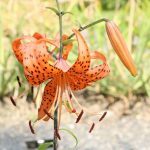
Fire lily, Lilium bulbiferum - location, flowering period and care
The fire lily belongs to the lily family and, with its fiery orange blossom, is an attractive eye-catcher in every garden bed. It is particularly widespread in the European mountains and in the Balkans. Since Lilium bulbiferum is an onion plant, it can be cultivated for several years. With the right care, the fire lily will grow between 90 cm and 120 cm tall and unfold its graceful flowers in summer.

Meadowsweet, Filipendula ulmaria - profile and pictures
Meadowsweet is a perennial plant from the rose family. The plant, which comes from Central and Eastern Europe, prefers moist and swampy meadows. Meadowsweet contains salicylic acid; this active ingredient is used in many medical products because of its pain-relieving and anti-inflammatory effects.

Marjoram, Origanum majorana - facts and figures
Marjoram belongs to the mint family and is annual in our latitudes, whereas in the Mediterranean region it is a perennial plant. Marjoram has been a well-known and popular spice since the Middle Ages. The largest growing area for marjoram in Europe is currently in Anhalt.
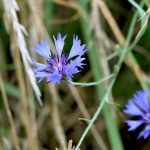
Cornflower, Centaurea cyanus - Fact Sheet and Pictures
The cornflower is an annual plant from the sunflower family. This beautiful plant is under nature protection, so it must not be collected. For a long time, the cornflower was considered an arable weed, and as a result it was gradually displaced from agriculture.
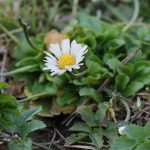
Daisies, Bellis perennis - facts and figures
The daisy is a perennial plant from the sunflower family. The plant comes from the Mediterranean region, so it prefers a sunny location. Daisies are popular wild herbs.

Jiaogulan, Gynostemma pentaphyllum - profile and pictures
Jiaogulan is a perennial climber in the cucurbit family. The plant originates from southern China and is now widespread in the whole of South Asia. Drinking jiaogulan tea is said to prevent cancer.

St. John's wort, Hypericum perforatum - profile and pictures
St. John's wort is a perennial plant from the St. John's wort family. The medicinal plant of 2015 is considered the best medicinal plant for depression. St. John's wort occurs in all climatic regions of the world, from the tropics to deserts to the arctic tundra.

Lady's mantle, Alchemilla xanthochlora - profile and pictures
Lady's mantle is a perennial plant from the rose family. The plant originally comes from Eastern Europe and Asia. Lady's mantle is used to cure women's ailments such as menstrual pain or menopausal symptoms.
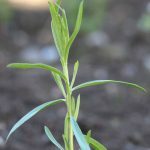
Tarragon, Artemisia dracunculus - Profile and Pictures
Tarragon is a perennial plant from the sunflower family. The plant, which originated in Asia, is now at home in many regions of the world. Tarragon is a popular herb and one of the most important ingredients for making Bearnaise sauce.
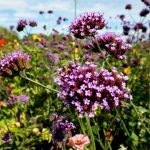
Verbena officinalis - facts and figures
Verbena is a perennial plant in the verbena family. As a medicinal plant, it is used for diseases in the digestive tract, but it is also said to have a healing effect against depression. Verbena is rarely used in the kitchen because it contains too many bitter substances.

Nettle, Urtica dioica - Profile and Pictures
The stinging nettle, which is unpopular in many places, is a perennial plant from the nettle family. Nettles are considered pointer plants for nitrogen-rich soils. Stinging nettles are excellent plants for self-sufficiency because they are very nutritious, especially the high iron content makes them interesting for everyone who suffers from iron deficiency.

Borage, Borago officinalis - Fact Sheet and Pictures
Borage is an annual plant in the predatory leaf family. The plant, which comes from the Mediterranean region, was cultivated in the monastery gardens of Central Europe at the beginning of the Middle Ages. Borage is also known as cucumber herb because it has the taste of fresh cucumber.

Savory, Satureja spec. - Wanted poster and pictures
Savory comes from the mint family. Summer and winter savory are the most common types of savory in Europe. Both species are native to the Mediterranean regions.
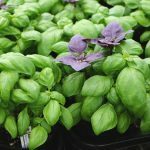
Basilikum, Ocimum basilicum - facts and figures
Basil is an annual plant in the mint family. The plant originally comes from the tropics and prefers a sunny location. In Mediterranean cuisine, basil is one of the most popular herbs for dishes and dishes.
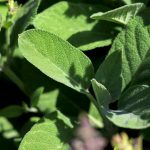
Sage, Salvia officinalis - facts and figures
Sage is a perennial plant in the mint family. The heat-loving plant of Mediterranean origin needs lime-rich, nutrient-poor and dry soils. Sage has been one of the most important medicinal plants since ancient times.
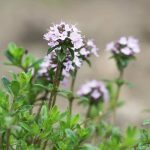
Thyme, Thymus vulgaris - facts and figures
Thyme is a perennial plant of the mint family. Since the ingredient thymol contained in the plant has antibacterial properties, thyme is used for numerous diseases. Because of its unique taste and because it ensures that high-fat dishes are more easily digested, it is one of the most popular culinary herbs.

Lemon balm, Melissa officinalis - facts and figures
Lemon balm is a perennial plant from the mint family. The plant is considered hardy and comes from southeastern Europe. In the kitchen it is also considered an excellent herb for fish dishes.

Parsley, Petroselinum crispum - profile and pictures
Parsley is a biennial plant from the umbelliferae family. It comes from the eastern Mediterranean region and is one of the most popular culinary herbs. Parsley is best added to the skewers uncooked so that it does not lose its aroma.
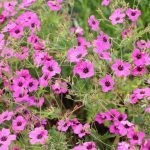
Malve, Malva sylvestris - Profile and Pictures
The mallow is a perennial plant from the mallow family. The wild mallow comes from the Eurasian region and was introduced to Europe. Mallows are hardy and withstand frosts up to 20 degrees below freezing.

Lavender, Lavandula angustifolia - plants + care instructions
Lavender is a perennial plant in the mint family. The subshrub comes from the Mediterranean area and needs a dry, sunny location. Essential oils extracted from lavender are popular fragrances, which is why the plant is grown extensively in southern France. Many people are enthusiastic about the extremely charming fragrance and the magical purple flowers. It is not difficult to like lavender. Real lavender gives off an aromatic scent and has a typical Mediterranean appearance with upright branches that branch out easily. With good care, many of the flowers can be picked in summer and stored in the linen cupboard to drive away moths.
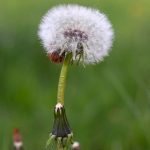
Dandelion, Taraxacum officinale - facts and figures
The dandelion is a perennial plant from the sunflower family and is considered a pointer plant for nitrogen-rich soils. The plant is enjoying increasing popularity in the kitchen. As a medicinal herb, usually in the form of a dandelion tea, it is used for complaints in the digestive tract.
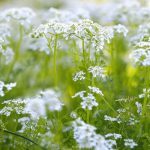
Chervil, Anthriscus cerefolium var. cerefolium - profile and pictures
Chervil is an annual plant and belongs to the sunflower family. Chervil is easily mistaken for parsley because of its leaves. Chervil is very popular in French cuisine and is therefore also known as French parsley.

Marigold, Calandula officinalis - facts and figures
The marigold is an annual plant and belongs to the sunflower family. The plant, which originates from the Mediterranean region, can be found quite often in cottage gardens or in cemeteries, which is why it is nicknamed "flower of the dead". Marigolds are used as a remedy for a wide variety of wounds and complaints.
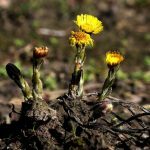
Coltsfoot, Tussilago farfara - profile and pictures
The coltsfoot is a perennial plant from the sunflower family and was named medicinal plant of the year in 1994. It is known to alleviate skin diseases or ailments in the bronchial area. Since the coltsfoot also contains pyrrolizidine alkaloids, which are liver-damaging in large quantities, excessive consumption of the herb is not recommended.
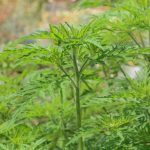
Mugwort, Artemisia vulgaris - facts and figures
Mugwort is an undemanding perennial plant and belongs to the sunflower family. Its distribution area extends over the entire northern hemisphere. Mugwort is often used as a culinary herb in fatty dishes.
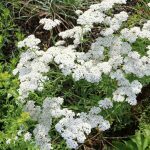
Yarrow, Achillea millefolium - profile and pictures
The common yarrow belongs to the sunflower family and is a perennial plant. Rubbing the leaves allows you to experience the aromatic scent of this plant. The essential oil is obtained by steam distillation and has many uses in the kitchen.
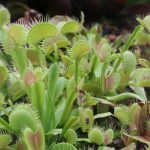
Keeping and caring for the Venus flytrap - how to feed it properly
The Venus flytrap has the botanical name Dionaea muscipula and belongs to the sundew family. The plant is very unusual because it is one of the carnivorous specimens, the carnivores. The Venus flytrap has very specific requirements when it comes to keeping, location conditions and care. These must be strictly adhered to so that it can thrive. The plant is particularly peculiar to the watering units; in addition, it has to be fed when necessary.

Baobab tree as a houseplant - care and pruning properly
The baobab tree is native to Africa. It got its name from German travelers who were fascinated by the imposing plant. The tree is called Adansonia in the technical language of the botanists. It got this name when it was discovered by Michel Adanson in 1749. It is characterized by noticeably thick leaves that look decorative. That is why the baobab tree is often kept as a houseplant. We'll tell you here how best to look after it.
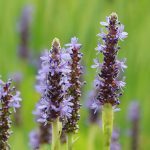
Heart-leaved pike herb, Pontederia cordata - care & water depth
The heart-leaved pike herb, botanically Pontederia cordata, with its blue to purple flowers is an extraordinary pond plant that does not have high maintenance requirements. As a solitary plant or planted in groups, it harmonizes very well with swan flowers or frog spoons. Not only hobby gardeners enjoy it, but also bees and dragonflies. Small fish also like to use the plants as protection from enemies.

Aloe Vera - keeping the plant, care, watering and repotting
There are around 250 types of aloe vera today. The valuable active ingredients that make them so well known are only contained in one variety, real aloe vera. All species have in common that they are very easy to care for and to keep. The evergreen plants belong to the so-called succulents. Therefore, they are satisfied with little water and poor substrate. Since aloe is not tolerant of frost, it must be moved to winter quarters during the cold season.
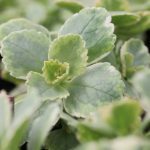
Piss off plant, Plectranthus caninus - care for the anti-cat perennial
Where chemical and acoustic means fail, the piss-off plant (Plectranthus caninus) is a hit. With a concentrated load of essential oils, it forms an invisible barrier for dogs and cats. Trampled beds contaminated with animal droppings are a thing of the past, where Plectranthus caninus thrive. So that the plant with the offensive name can fully develop its power, important criteria must be observed in the cultivation. This green guide explains all the details about caring for the anti-cat perennial.
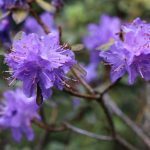
Rhododendron russatum 'Gletschernacht' - profile and care information
The evergreen Rhododendron russatum is at its top form in May when it presents its magnificent, initially blue-violet and after blooming, dark-blue flowers. In combination with the dark green foliage, it attracts everyone's attention. This upright and later compact rhododendron is one of the smaller varieties with heights of up to 110 cm. However, it only reaches its final size after 10-15 years.
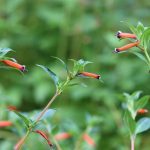
Quiver flowers, Cuphea - wanted poster, care and overwintering
Quiver flowers with their distinctive tubular flowers set surprising accents in the bed, on the balcony and on the windowsill. The Mexican flower beauties give your design plan for indoors and outdoors an exotic flair. With their lush appearance and a never-ending flowering period, Cuphea are much more than a floral vehicle for classic perennials. The following profile summarizes all wonderful attributes. Find out here how to properly care for the pretty cigarette flowers and successfully overwinter them.

Elfenspiegel, Nemesia - Care instructions for the summer flower
The Elfenspiegel enchants in summer with its many, small flowers that are reminiscent of violets. The summer bloomers are available in a wide variety of colors, including multi-colored. From a botanical point of view, the Elfenspiegel forms its own genus (Nemesia), to which around 65 varieties belong. With us, the popular summer bloomer is planted in the garden or cultivated in planters. Nemesia is easy to care for when the right location is found. Unfortunately, the abundant flowering plants are mostly not perennial.

Gold dust plant, Mecardoni 'Gold Dust' - profile and care
Quite inconspicuous at first glance, the gold dust plant Mecardoni 'Gold Dust' unfolds its full splendor throughout the summer until the first frost. Then this grateful bed and balcony flower is, of cushion-like, creeping growth, covered by countless, small, bright yellow flowers. These filigree yellow flowers can be seen from afar and are equally effective in hanging baskets, window boxes or as ground cover. Unfortunately it is not hardy.
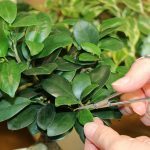
Ficus Ginseng as a bonsai - care and cutting
The Ficus Ginseng can be cultivated well as a bonsai because it is relatively easy to care for. Even beginners in this area will be able to cope with the delicate little tree, and the purchase price is manageable. The small bonsai is very decorative and fits both in the living room and in an office. It is important to adhere to certain care steps with regard to the site conditions and the casting units, so that the owner can enjoy the exotic plant for many years.
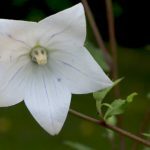
Balloon flower, Platycodon grandiflorus - care of the balloon plant
The balloon flower owes its unusual name to the striking flower buds, which are reminiscent of small-sized balloons. The ornamental plant belongs to the widespread family of bluebells. The balloon flower is originally native to various Asian countries, but it can also cope with the local conditions. The herbaceous perennial is also known under the botanical name Platycodon Grandiflorus. The balloon flowers can reach a diameter of up to 10 cm and are available in different shades of color in specialist shops.

Congo lizards, Niamniam balsam, Impatiens niamniamensis - care
With its eye-catching and at the same time bizarre flowers, the Congo Lieschen, also known as the parrot's beak flower, sets color accents almost all year round. Due to the lack of winter hardiness, the spring herb plant is cultivated exclusively in tubs or pots and overwintered frost-free. It is evergreen, perennial, well branched and succulent. Nevertheless, it is relatively rare to find it as a houseplant, although it is very easy to care for.

Ice begonias, Begonia semperflorens - care for the summer bloomer
Its flowers are dainty and small, but the ice begonia produces them tirelessly over the all summer in such abundance that the flower is our favorite summer bed dweller heard. They decorate gardens, borders and flower pots from May to autumn. What every hobby gardener particularly likes: The classic is one of the most robust permanent bloomers in our latitudes and requires little maintenance. Unfortunately, ice begonias are not hardy.
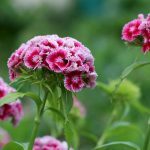
Barnacles, Dianthus barbatus - sowing and care in the garden
For a long time the carnation was considered old-fashioned and was only cultivated in cottage gardens. But now the pretty flower is experiencing a renaissance. Lovers and flower lovers have not only rediscovered them for the garden, they also help to create them the fragrant perennial bloomer also has beautiful flower arrangements in pots on the balcony and the Terrace. Here you can find out everything you should know about sowing, growing and caring for the bearded carnation.
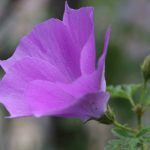
Blue hibiscus, Alyogyne huegelii - planting and care instructions
The blue hibiscus is a fascinating plant that enhances gardens and parks in the summer months with its 10 cm large flowers. Mallow plants are versatile, but this perennially flowering subshrub has a few special requirements when it comes to cultivation. Alyogyne huegelii is a plant that is native to warm areas. The herbaceous plant feels at home in the bucket and can thus be set up in the winter garden and outdoors without any problems.
